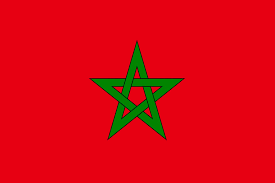Language/Moroccan-arabic/Grammar/Gender-and-Plurals
 Հայերէն
Հայերէն Български език
Български език 官话
官话 官話
官話 Hrvatski jezik
Hrvatski jezik Český jazyk
Český jazyk Nederlands
Nederlands English
English Suomen kieli
Suomen kieli Français
Français Deutsch
Deutsch עברית
עברית हिन्दी
हिन्दी Magyar
Magyar Bahasa Indonesia
Bahasa Indonesia فارسی
فارسی Italiano
Italiano 日本語
日本語 Қазақ тілі
Қазақ тілі 한국어
한국어 Lietuvių kalba
Lietuvių kalba Νέα Ελληνικά
Νέα Ελληνικά Şimali Azərbaycanlılar
Şimali Azərbaycanlılar Język polski
Język polski Português
Português Limba Română
Limba Română Русский язык
Русский язык Српски
Српски Español
Español العربية القياسية
العربية القياسية Svenska
Svenska Wikang Tagalog
Wikang Tagalog தமிழ்
தமிழ் ภาษาไทย
ภาษาไทย Türkçe
Türkçe Українська мова
Українська мова Urdu
Urdu Tiếng Việt
Tiếng ViệtAs a beginner in Moroccan Arabic, one of the first things you need to master is noun gender and plurals. In this lesson, you will learn the rules concerning the gender and plural forms of nouns in Moroccan Arabic, an important aspect of the language that you will encounter in everyday conversations.
Gender of Nouns
In Moroccan Arabic, nouns can be either masculine or feminine, and there are several rules that govern the assignment of gender. The following are some of the most common gender rules:
- Nouns that refer to males or have a masculine connotation are masculine. For example, the noun "walad" (meaning son), is masculine.
- Nouns that refer to females or have a feminine connotation are feminine. For example, the noun "bint" (meaning daughter), is feminine.
- Nouns ending in -a are usually feminine, while those ending in other vowels are usually masculine.
- Nouns ending in consonants can be either masculine or feminine, and there are no clear rules for assigning gender to these nouns. You have to memorize them.
Here is a table with examples to illustrate the gender distinction in Moroccan Arabic:
| Moroccan Arabic | Pronunciation | English |
|---|---|---|
| ولد | wld | son (masculine) |
| بنت | bnt | daughter (feminine) |
| يد | yd | hand (feminine) |
| شمس | shms | sun (feminine) |
| كتاب | ktāb | book (masculine) |
| طائر | ṭāʼer | bird (masculine) |
Now that you have learned how to assign gender to nouns, it is time to move on to plurals.
Plural of Nouns
In Moroccan Arabic, there are different ways to form the plural of nouns, and the rules depend on the gender and ending of the noun. Here are a few of the most common plural rules:
- For masculine nouns ending in a vowel, the plural is often formed by adding -in. For example, the word "kitab" (book) becomes "kutub" (books) in the plural form.
- For masculine nouns ending in consonants, the plural is often formed by adding -at. For example, the word "kalb" (dog) becomes "klab" (dogs) in the plural form.
- For feminine nouns ending in -a, the plural is often formed by adding -at. For example, the word "bint" (daughter) becomes "banat" (daughters) in the plural form.
- For feminine nouns that end in -iya, the plural can be formed by either adding -at or changing the -iya into -iyat. For example, the word "madrasa" (school) becomes "madaris" or "madrasat" (schools) in the plural form.
Here is a table with examples to illustrate the different plural forms in Moroccan Arabic:
| Moroccan Arabic | Pronunciation | English |
|---|---|---|
| كتاب | kutub | books (masculine) |
| حصان | ḥissan | horses (masculine) |
| باب | bāb | doors (masculine) |
| بنت | banat | daughters (feminine) |
| مدرسة | madaris/madrasat | schools (feminine) |
As you learn more vocabulary, you will come across many exceptions to the rules outlined above. In many cases, you will simply have to memorize the plural forms of certain nouns.
Pronouns and Gender
Just like nouns, pronouns in Moroccan Arabic are also gendered. For example, the personal pronoun "he" is usually rendered as "huwa" for masculine nouns and "hiya" for feminine nouns.
In addition, possessive pronouns must agree in gender and number with the nouns they modify. For example, the possessive pronoun "my" in Moroccan Arabic is "diali" for masculine nouns and "dialti" for feminine nouns.
Conclusion
In this lesson, you have learned about the gender and plural rules for nouns in Moroccan Arabic. Whether you are speaking with a friend or a fellow traveler, understanding these rules will help you to better communicate and connect with others.
Remember to keep practicing and checking your progress regularly. Learning a language can be challenging, but with dedication and hard work, you will master it eventually!
Sources

